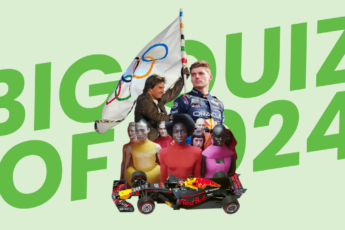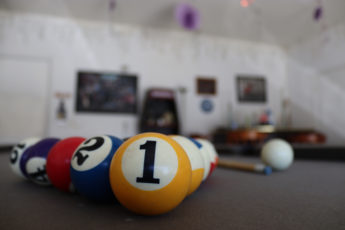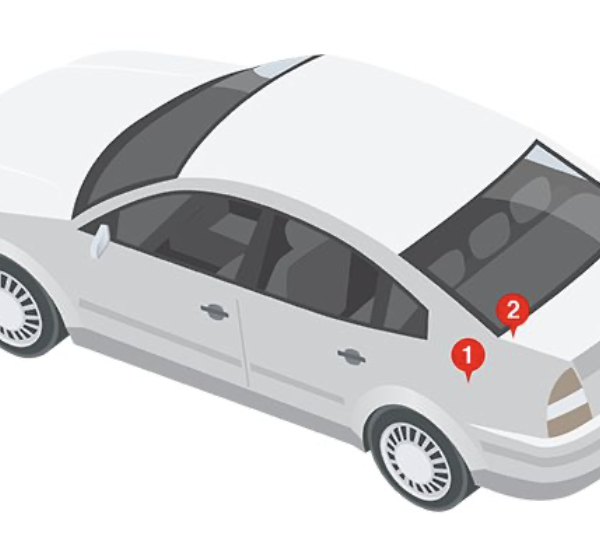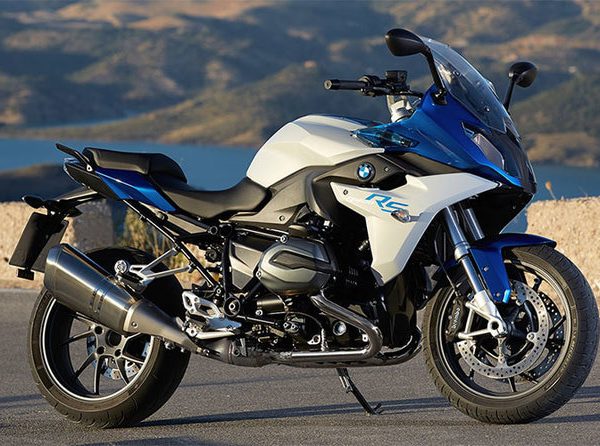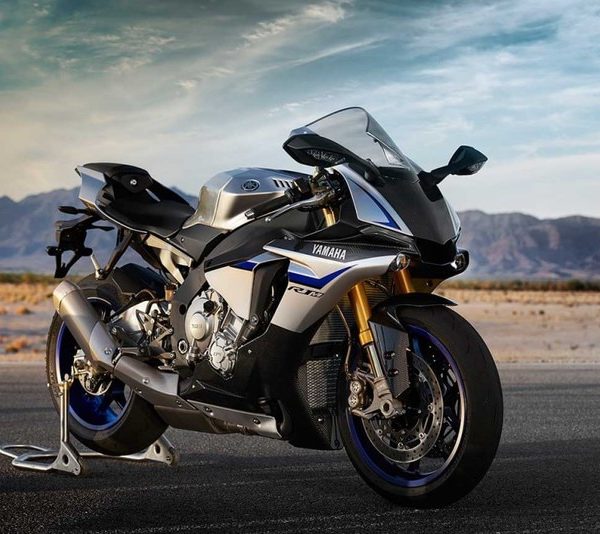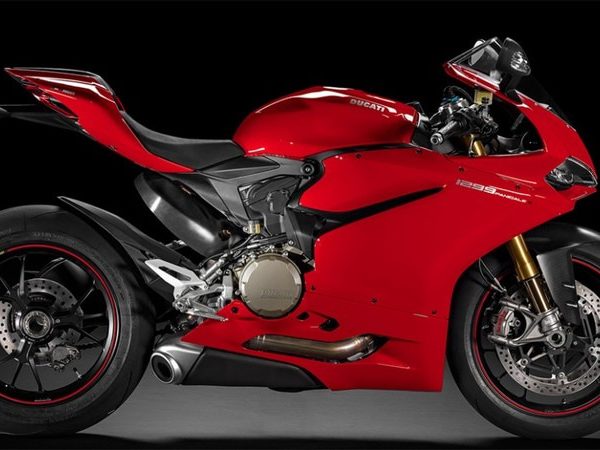7 Amazing Racing Stories

There are a million great stories in the history of racing. With the high stakes of the sport and the endless supply of colorful characters, there is no shortage of fascinating races in history. We’ve looked around and found some of the racing world’s most interesting tales. We’re taking a look at the races that changed the sport. The races that caused scandal and utter heartbreak. The great victories and devastating defeats. Here are 7 of the most fascinating races of all time.
1903 Paris to Madrid
The last of the great city to city races took place in May 1903. From its inception 10 years earlier, automobile races had become a phenomenon. One of the most popular forms of racing involved racers using public streets to race each other from city to city. This new race would go from Paris to Madrid. The hype was incredible and the caliber of racers reflected that. The roster included some of the most famous automotive names of the day including wealthy racing enthusiasts, the best race car drivers of that era, the founders of Renault and Rolls Royce, and even (keep your monocles firmly glued to your face now) WOMEN DRIVERS. Automotive technology also grew with each race and the desire to see new speeds reached was a huge draw. Paris to Madrid was a sensation before it even began. 100,000 spectators showed up to see the 224 racers take off from the gardens of Versailles. The racers would never make it to Madrid.
There had been concerns that street racing was incredibly dangerous for both bystanders and drivers. But given the enthusiasm from the public and France’s reputation as a nation of car builders, the French government allowed it to go forward. By the time racers reached Bordeaux the next day, half the cars had crashed or removed themselves from the race. The weather conditions had been bad, kicking up dust and making it impossible to see. Which was horrifying given the cars had indeed gone faster than ever before down roads that had legions of unsupervised spectators and bystanders. 3 spectators and 5 racers, including Marcel Renault, were killed. Spain refused to let the remaining racers enter the country and the race was canceled. The cars were removed from Bordeaux using horses and trains, as they were not even allowed to turn their engines back on. Consequences came swiftly. Speed limits were proposed and by the next year, the French government banned women from motorsport (even though Camille du Gast had done well in the Paris-Madrid race even after stopping to save the life of a fellow racer). The carnage of the race basically killed city to city racing. The next race to use public highways in Europe would not take place until 1927. The sport, however, could not be stopped, with the Grand Prix making its debut 3 years after the Paris-Madrid race at a small French town called Le Mans.
1982 Dakar Rally
In 1982, the Dakar Rally was in its fourth year of existence. An off-road endurance test, racers travel from Paris, France to Dakar, Senegal. Competitors use a variety of off-roading vehicles like trucks and motorbikes to traverse incredibly difficult terrain. The 1982 trail was spread through 5 countries and took racers through the Sahara Desert. The race began with 382 competitors who made their way from France to Algeria. On their way from Timeaouine, Algeria to Gao in Mali, a Peugeot suffered a broken axle and had to stop. The convoy marked down their location and continued on. Once in Gao, it became clear that they had recorded the location incorrectly and lost the crew of three: Mark Thatcher, Anne-Charlotte Verney, and Jean Garnier. This would not normally be the stuff of front page news all over the world, but Mark Thatcher’s mother was Margaret Thatcher, the Prime Minister of Great Britain.
When asked about his preparations for the arduous and difficult Dakar Rally, Mark Thatcher had this to say: “I did absolutely no preparation. Nothing. I did half a day’s testing and the day after that we were driving out of the Place de la Concorde in Paris.” Thatcher’s inclusion on the team came about after his stint racing at the 24 Hours at Le Mans. A sponsor offered him a Peugeot to race at the Dakar Rally. Thatcher agreed to the race and proceeded to forget about it until just before the race, when they contacted him to do press. “I’ve now raced in Le Mans and other things – this rally is no problem” he told the BBC. This quote would get a lot of mileage once he went missing. A giant search effort was put into place. Mrs. Thatcher was said to be “very distressed” and her husband Dennis was dispatched to Algeria to help with the search. Then, almost a week after the team was declared missing, the Algerian air force spotted a white Peugeot in the distance. It was located 31 miles off-course. The search party approached the car and…they were fine. Their rations had held out and Thatcher breezily declared that he needed “a beer and a sandwich, a bath and a shave”. The ensuing unpaid bill for his celebration drinks caused a scandal back home.
The Winston 1989 (The Tide Slide)
Now known as the NASCAR All Star Race, the Winston featured only the season’s best drivers. To join this prestigious lineup in 1989, you had to have won one of the races in the NASCAR Winston Cup series in 1988 or 1989. If you won, you’d get bragging rights over the creme de la creme of your sport and a $200,000 prize pot. What would you do for riches and glory? How would you react if that was taken away with the finish line in sight?
Darrell Waltrip was a controversial figure in NASCAR. He had a reputation for aggressive, take no prisoners driving and was utterly unafraid to criticize everyone from his sponsors to NASCAR itself. His combative nature even earned him the nickname, “Jaws” and boos from some fans when he won. And he won a lot, even taking home the prize at the very first Winston. A nasty crash at the 1983 Daytona 500 softened his demeanor and by the time of the 1989 Winston, Waltrip had become a kinder, gentler Jaws. The life change hadn’t hindered his talent. He spent most of 1988 and early 1989 dueling with an up and comer called Rusty Wallace. Wallace came into the Winston with 9 wins for ‘88/’89 under his belt. His talent and baby face made him a favorite of the crowd. Wallace was seen as the future of the sport. Wallace and Waltrip traded first and second place for almost the entire race but as they reached the end, Waltrip had the lead. With only 2 laps to go, Wallace hit Waltrip’s fender. Fans in the stands and at home watched Waltrip’s Tide sponsored car spin and slide into the grass. Wallace cruised to victory and was immediately met by Waltrip’s utterly furious pit crew. One of Wallace’s crew shouldered his counterpart out of the way and all hell broke loose. Live on national television, both crews cleared their benches and brawled. Though the two racers made up later that week, Waltrip told reporters after the race that “I hope he chokes on that $200,000 ”. Wallace maintained that the bump was an accident but was booed at the podium nevertheless. He was later reported to have said “If i’d known what that would do to my fanbase, I’d have gladly given him that money.”
1992 Hooters 500
Richard Petty was known as “The King” for a reason. Over 30 years, Petty had racked up quite the trophy case. He won 200 races during his career and was the very first NASCAR racer to win 7 championships. 34 years is a great run and it was time for the King to retire. He announced that the 1992 Hooters 500 would be his very last race. A massive appreciation concert was and his face adorned the cover of the programs as NASCAR fans prepared to say farewell. But even if it wasn’t the departure of a legend, the fans had good reason to laser focus on this race. At the time, NASCAR had a points system in place. Over the season, your placement in each race and the amount of laps you lead determined how many points you were given. Usually, by the final race, one driver had accumulated enough points that the championship was in the bag. Sometimes there was a face/off between one or two drivers to see who would win this last race and get the points. In the 1992 season, there were six drivers who could possibly take home the top prize.
Davey Allison led the pack thanks to his early wins in the season. Unfortunately, he hadn’t been able to win enough points thanks to a series of wrecks, bad luck and a personal tragedy with the loss of brother. Right behind him was Alan Kulwicki. Kulwicki didn’t have as many wins but had been consistent in his finishes and placement. Bill Elliott had capitalized early on Allison’s losses but lost the lead after some bad performances. At 52, Harry Gant would be the oldest Winston Cup champion in history. For Kyle Petty, winning the championship in the very last race his father ever ran would be a hell of a story. And bringing up the rear was Mank Martin, who had come so close only a few years before. So, at the Atlanta Motor Speedway, the six racers got down to business. Early on, it was Elliott in the lead followed closely by Kulwicki, Martin, and Gant. Disaster struck as Kulwicki’s gearbox broke. His pit crew had to push the car out of the box and Kulwicki never went under 4th gear for the rest of the race. Kyle Petty was not so lucky. An engine issue hamstrung his chances and he eventually finished the race in 16th place. On lap 96, Richard Petty’s car crashed and burst into flames. He escaped, later stating “I wanted to go out in a blaze of glory. I just forgot about the glory.”
Around the 100 lap mark, Allison had taken the lead. Unfortunately for him, the pit crew of a rookie named Jeff Gordon had left a roll of duct tape on the hood of his car. It fell onto the track where Allison eventually hit it. The tape caused handling issues and made his lead very shaky. Soon, it became a 3 man race as Gant had fallen too far behind and Martin’s engine blew. The televised broadcast displayed a constantly changing point leaderboard. And then, on lap 254, Ernie Irvan lost control of his car and took Davey Allison down with him. So now, it came down to Kulwicki and Elliott. It became a battle not just to win this race, but to lead and get enough points. Eventually, Elliott won the race but Kulwicki came in 2nd and took home the championship by just 10 points. Petty’s crew got his car working enough that he could complete his final race. He even gave them a final victory lap. It would also be momentous as the only race that had both Richard Petty and Jeff Gordon. Because wouldn’t you know it, that rookie making his debut with duct tape on his hood became a legend himself. The 1992 Hooters 500 is widely considered one of the greatest races of all time. The finale to a season where anyone could win. The last race of a true legend. The debut of a future racing superstar…all sponsored by Hooters.
1994 San Marino Grand Prix
The 1994 San Marino Grand Prix is perhaps the most cursed race in automotive history. A series of devastating tragedies led to massive changes in the sport. It was only the 3rd race of the 1994 season. Going into San Marino, Michael Schumacher of Germany had won both the Brazilian and Pacific Grands Prix. In both of these races, the legendary Brazilian Ayrton Senna took the pole position in qualifiers but ultimately spun out. He eventually took the pole position in San Marino as well, but the first day qualifiers were marred by an unsettling crash. Rubens Barichello’s car was launched into the tire barrier. FIA doctors worked hard to stabilize him at the scene. Barichello sustained a broken nose and sprained wrist. He later said that he awoke at the medical center to find Senna standing over him. His fellow Brazilian checked that he would be alright and then headed back to his car. It was an ill-omen but no one could have anticipated how much worse the weekend was going to get.
Qualifiers continued into Saturday. Early in the day, Roland Ratzenberger of Austria had gone off the track. This was his first season in Formula One. He had dreamt of this for years and after a disappointing showing in Brazil, he came a respectable 11th at the Pacific Grand Prix. At the time, this small incident didn’t feel like a big deal. As far as they could tell, the car hadn’t sustained damage. Ratzenberger elected to stay in the race. In actuality, his front wing had become damaged and came adrift at the worst possible time. As Ratzenberger tried to implement a turn, the bolts came loose from the wing and sent him into the wall. The 33 year old was rushed to the medical center and then a hospital in Bologna. He was pronounced dead on arrival. The other drivers were stunned and heartbroken by the loss but they agreed to continue on with the race. They also gathered and began to put into place plans to restore their union, the Grand Prix Drivers Association. Senna spoke to his former rival turned sportscaster, Alain Prost, volunteering to be chairman.
Sunday did not start out any better. As the race began, Pedro Lamy and JJ Lehto collided and sent pieces of debris flying into the crowd. 9 bystanders were injured. The race continued. Senna soon took the lead with Schumacher right behind him. As they reached the Tambourello Corner, Senna did not turn. He hit the wall at 130 mph. Ayrton Senna, one of the greatest racers of all time, was pronounced dead at the hospital. He was 34 years old. In his car, race officials found an Austrian flag that he intended to unfurl in honor of Ratzenberger. Senna was given a state funeral in Brazil, broadcast on nation tv. A few of the drivers went directly from the funeral in São Paulo to fly to Salzburg for Ratzenberger’s the next day. At the next race, the Monaco Grand Prix, Niki Lauda announced the reformation of the Drivers’ Association. The drivers demanded changes that would ensure their safety. The FIA responded with redesigned tracks and safety precautions put into place. It would be another 20 years before the Grand Prix saw another death.
1998 Daytona 500
NASCAR was founded in a hotel room in Daytona, Florida. So it’s fitting that the Daytona 500 is considered to be the most important NASCAR race of the season, carrying great prestige and wealth for whoever wins it. One name irrevocably tied to this race, in ways both joyful and heartbreaking is Dale Earnhardt. Considered one of the best drivers to ever race, Earnhardt made his debut in the 1979 Daytona 500. Over the next 20 years, he would chase the dream of holding the Harley J. Earl trophy over his head. And eventually it would be on the hallowed Daytona International Speedway that Earnhardt lost his life. But that’s a sad story for another day. Right now, let’s turn our attention to the race where Dale Earnhardt Sr. finally won the prize that had eluded him for so long.
In his first Daytona 500, Dale Earnhardt came in 8th. Not too shabby for a rookie. But as the years went on, the fates conspired to keep him from the Daytona 500 win. He came 2nd in 1984, 1993, 1995 and 1996. Earnhardt came into contact with every odd obstruction you can think of: engine failure, debris on the road, that one unfortunate seagull. But outside of the Daytona 500, Earnhardt was winning big. He won the whole series 6 times, tying him with Richard Petty and Jimmie Johnson for the most championships. From 1987 to 1996, Earnhardt finished in the top ten of every Daytona 500. 1997 is not on this list because his car flipped on the track. He still came in 31st, as he got up, drove his wrecked car back to the pit, got it fixed, and went back to the race. 1998 would be his 20th Daytona 500 and people were getting antsy for his win. They needn’t have worried. Out of the 200 laps, Earnhardt led for 107 of them. When the checkered flag came down, Dale Earnhardt was the winner of the Daytona 500. Cameras caught his pit crew weeping as they celebrated. As Earnhardt’s iconic No. 3 pulled into pit road, the cameras caught a stunning sight. Every single member of every single team’s pit crew for the race lined up to congratulate the greatest of all time.
2008 Singapore Grand Prix
2008 was looking like an exciting year for the Renault team. After a disappointing 2007 season, things were looking up. Their former golden boy, Fernando Alonso, had returned to the fold after a year with McClaren. In 2005 & 2006, Alonso and Renault had won both the Drivers’ Championship and the Constructors’ Championship. Their time apart hadn’t been entirely successful for either party, with a disastrous 2007 season for Renault and Alonso coming 3rd overall. But now they were back together and ready to take the world by storm. That was the intention at least.
For the first 14 races, Fernando Alonso did not place. By the Singapore Grand Prix, things were looking a little desperate. Singapore began with more of the same from Alonso and Renault. They implemented a new strategy. It would require them to give Alonso a low fuel start that would require him to go into the pit earlier to refuel and change tires. He refueled at lap 12 and rejoined the race at the back of the pack. Suddenly, an act of serendipity occurred. Alonso’s Renault teammate, Nelson Piquet, crashed on lap 15. A safety car was deployed. Safety regulations at the time said that if a safety car was out, the pit lane was closed. This bunched up all the cars behind the safety car, killing any advantage and momentum the leaders had. It also meant that once the pit lane opened again, it would be cluttered with cars waiting to be serviced. Unless, of course, you’d already been serviced 2 laps before. Alonso gained the advantage and eventually won the Singapore Grand Prix. Jealous whispers suggested that the race was fixed and Piquet was told to crash at exactly that moment. They were dismissed completely as bitter speculation. But as it turns out…that was exactly what happened.
Deep into the 2009 season, Nelson Piquet Jr. had scored no points. Renault let him go from the team on the 9th of August and on the 30th, news leaked that the FIA was investigating “alleged incidents at a previous F1 event”. Piquet had turned whistleblower. He told the FIA that Flavio Briatore, Renault’s managing director, and Pat Symonds, Renault’s director of engineering, had told him to crash at the Singapore Grand Prix. Renault, Symonds, and Renault immediately went on the offensive, threatening to sue Piquet and accusing him of blackmail. While some questioned if Alonso had known about the plot, the FIA could find no evidence that proved so and absolved him. Ultimately, Symonds and Briatore left Renault. Symonds confessed to the World Motorsports Council and received a 5 year ban. Briatore did not and received a lifetime ban. Neither of these stuck. Nelson Piquet Jr. and his father, Nelson Piquet Sr. successfully sued Renault for libel over their allegations of blackmail.

 Cart
Cart
 Help Desk
Help Desk
